
Dell Technologies, since its founding 37 years ago, has been about infrastructure — from the servers, networking systems and storage appliances that populate enterprise datacenters to the corporate clients that are designed to make employees more productive. Infrastructure is what has driven Dell to become a multinational IT giant that brought more than $92 billion in net revenue in 2020 and that has made founder and CEO Michael Dell a multi-billionaire.
But like longtime peers such as Hewlett Packard Enterprise, Lenovo, IBM, and Cisco Systems, Dell for much of the past decade has had to adapt to a rapidly changing IT environment where data is king, software is increasingly a key enabler for organizations, cloud is the preferred computing model both inside and outside the datacenter and the edge is the new frontier. Automation is in demand to help drive modern workloads from machine learning to data analytics and augmented and virtual reality (AR and VR) and computing is widely distributed, with applications and data being accessed, collected, stored, analyzed and acted upon more and more outside of the central datacenter.
With such complexity, enterprises are turning to vendors to help them with managing these environments and reducing the complexity.
OEMs like Dell and others are undergoing huge transitions to address these changes, taking such steps as offering more of their products as services — Dell is doing this through its year-old Apex initiative — and making them available on-premises and in the cloud (and increasingly at the edge), adopting cloud-like pay-per-use consumption models, embracing opex over capex, building up their capabilities in such areas as software and security and evolving to meet demands brought on by cloud-native technologies like containers and Kubernetes.
Much of this was in play this week at the virtual Dell Technologies Summit. A lot of the focus was on such topics as data management and the edge, with the idea that simplicity was key.
“What I find interesting about our opportunity is if you look around the world and let’s say you’re into AI drug discovery or you’re into autonomous transportation or you’re into the metaverse or the blockchain, AR, VR, immersive computing. All of these things have one thing in common, and that is the enormous amount of data,” Michael Dell said during a virtual session with journalists and analysts. “The amount of data in the world just keeps growing. The amount of time it takes for the amount of data in the world to double is shrinking because everything in the world is becoming intelligent and now connected with 5G [and] low-latency networks. The plot of any organization is to use all of that to create competitive advantage and create success, and that requires new capabilities, new tools, new infrastructure.”
A move Dell made at the event aimed at managing data in a cloud-native world was introducing Container Storage Modules, which are designed to enable DevOps teams to deliver automated enterprise storage services like data replication across datacenters, role-based access control (RBAC) authorization and observability and resiliency, to Kubernetes-based container workloads.
The modules use the container storage interface (CSI) drivers, which already deliver lifecycle management and snapshots for Kubernetes, to link the containers to the storage arrays and injects storage code into Kubernetes, enabling developers and IT teams to leverage Dell EMC storage products like PowerMax and PowerStore all-flash systems, PowerScale for scale-out NAS, PowerFlex (scale-out high-performance environments) and Unity XT (hybrid and all-flash storage).
“Application developers across organizations of all sizes are increasingly adopting containers for cloud-native workloads,” Magi Kapoor, director of storage product management at Dell EMC, wrote in a blog post, noting that by 2025, more than 85 percent of companies worldwide will be running containerized applications in production. “For all the benefits containerized workloads provide, there are still challenges for businesses to overcome — everything from a lack of internal alignment to visibility and monitoring issues to meeting security and compliance requirements.”
Dell EMC’s CSMs are aimed at addressing such issues by expanding such capabilities as replication, authorization, resiliency and observability to Kubernetes-based workloads, she wrote.
Dell’s CSM comes the same week that rival NetApp said its Astra — a fully managed data management service built for Kubernetes workloads — became generally available, another data point in the push by traditional storage vendors to evolve into data management companies and embrace cloud-native technologies. Through Astra, enterprises can protect, recovery and move applications on Kubernetes without having to download and install software.
The edge is another area that organizations and tech vendors are going to have to deal with. According to IDC, more than half of new IT infrastructure will be deployed at the edge by 2023 and the number of new operational processes deployed on edge infrastructure will jump from 20 percent now to more than 90 percent in 2024.
Dell this week released a number of edge-related products and services that are intended to make the edge a more comfortable place for enterprises.
“Part of our job is to make this as simple as possible and we don’t want to be naïve about it,” Dell said. “It is a challenge, particularly when you think about what’s going on at the edge. Right now, we’re sort of in the dawn of the edge computing age. If you talk to all the various companies in the edge — and that would pretty much be every company on the planet, because effectively, the edge is the real physical world and all of those things are becoming intelligent — there’s a real risk that it is a complexity nightmare because you effectively have created an enormous number of silos. That’s why we’re working to get in front of this and create a platform that helps customers address that.”
The company is pushing out its VxRail hyperconverged infrastructure — jointly created with VMware — to the edge with its new satellite nodes that feature a smaller footprint, an important factor in space-constrained sites like retail stores, manufacturing facilities and branch offices. The nodes automate many regular tasks while enabling health monitoring and lifecycle management from a centralized location.
Validated Design for Manufacturing Edge with Litmus (an automation technology company) is based on Dell EMC PowerEdge or VxRail systems — with an option to use VMware Edge Compute Stack, an offering announced earlier this month by VMware for building, managing and securing applications at the edge — to help IT teams manage and orchestrate industrial edge devices, data and applications in disparate locations. In addition, the Dell EMC Edge Gateway gives enterprises as way of connecting multiple edge devices. It’s a 5G-cable system powered by Intel’s 9th Gen Core processors that can run in industrial environments, including temperatures from 4 to 140 degrees Fahrenheit.
The vendor’s Streaming Data Platform (SDP) includes enhanced GPU optimization to improve the latency and frame-rate environment when ingesting streaming video and to support real-time analytics on VxRail and PowerEdge systems. It’s a scale-up offering that can run lightweight workloads on a single core leveraging a bundle of edge-focused software bundle.

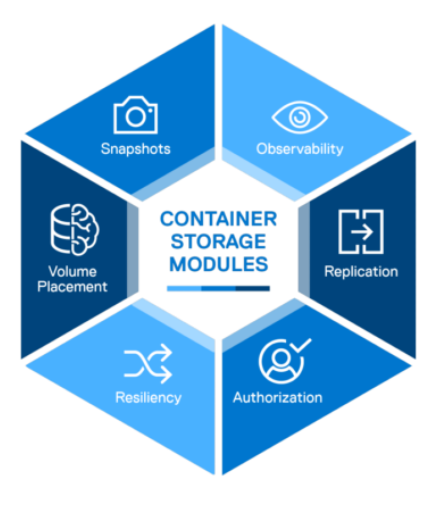
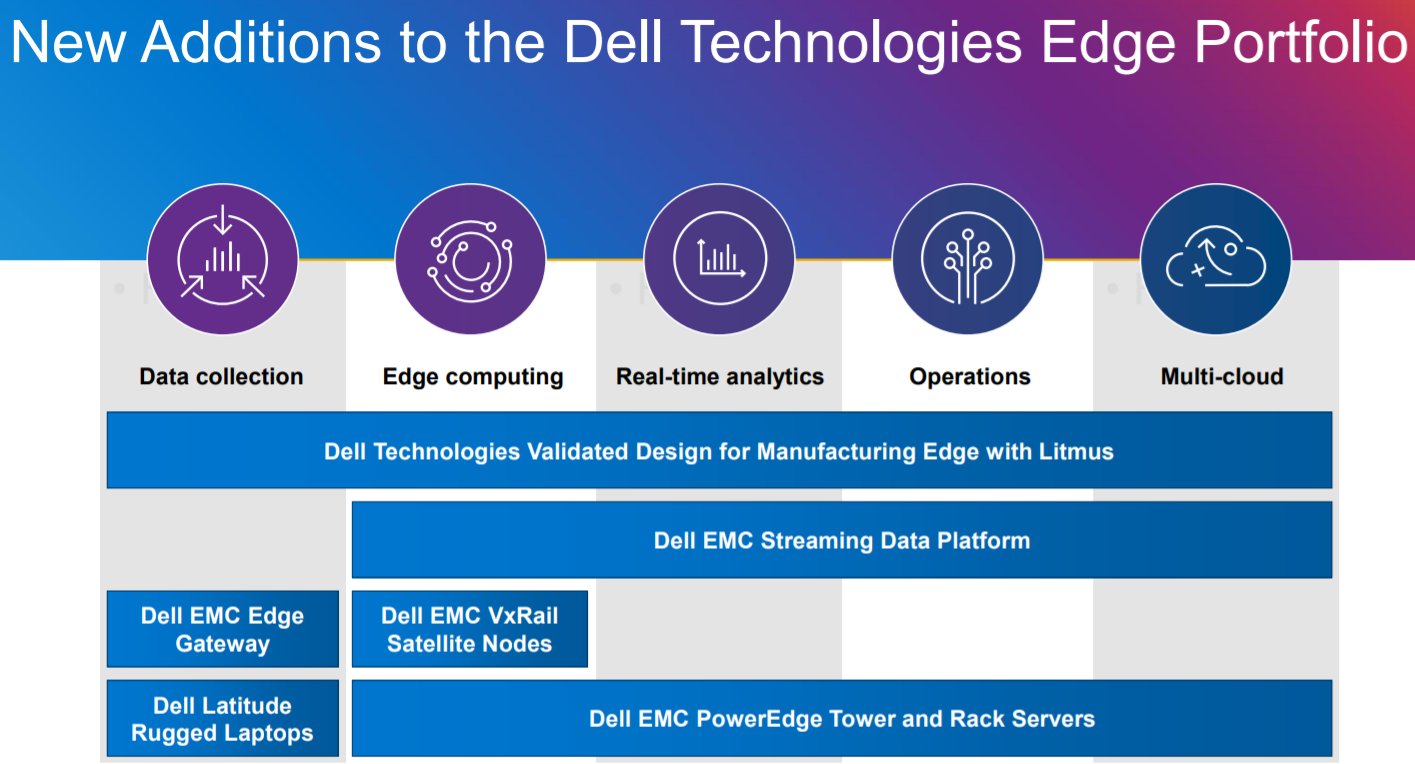
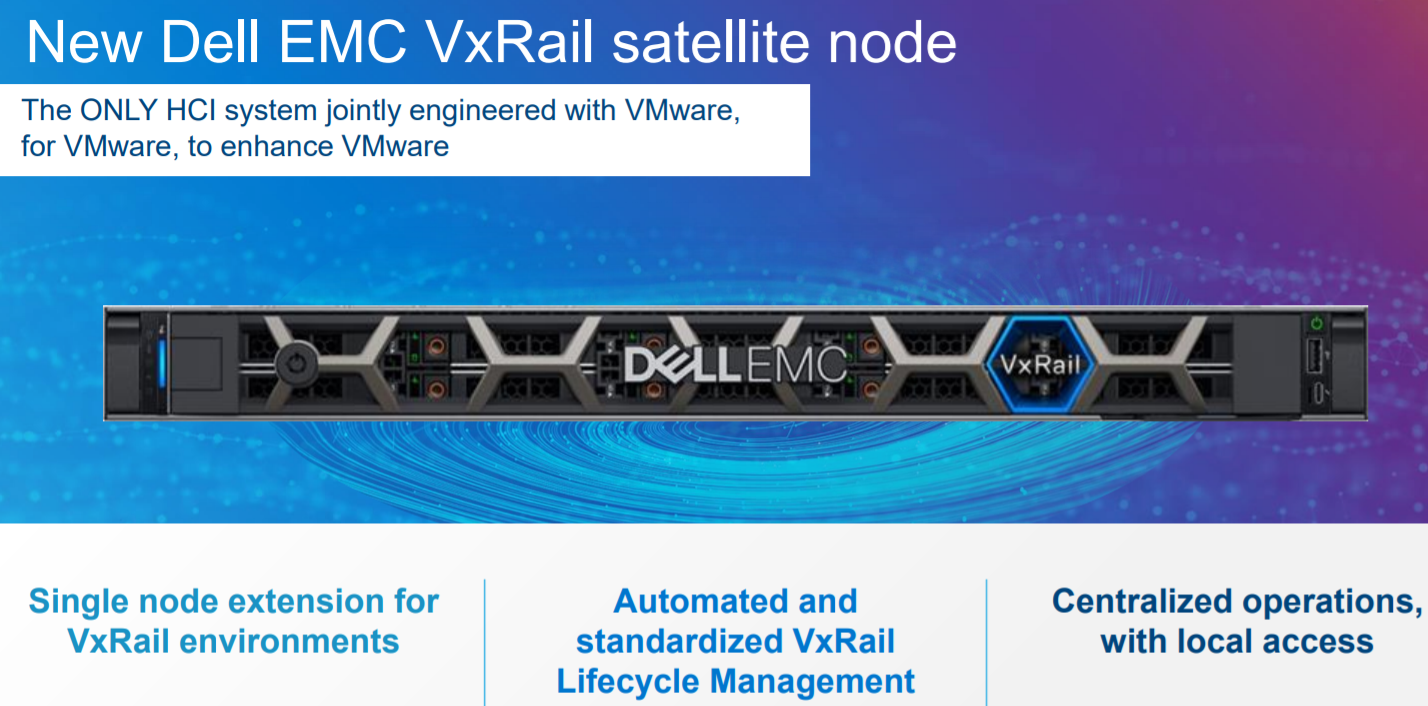
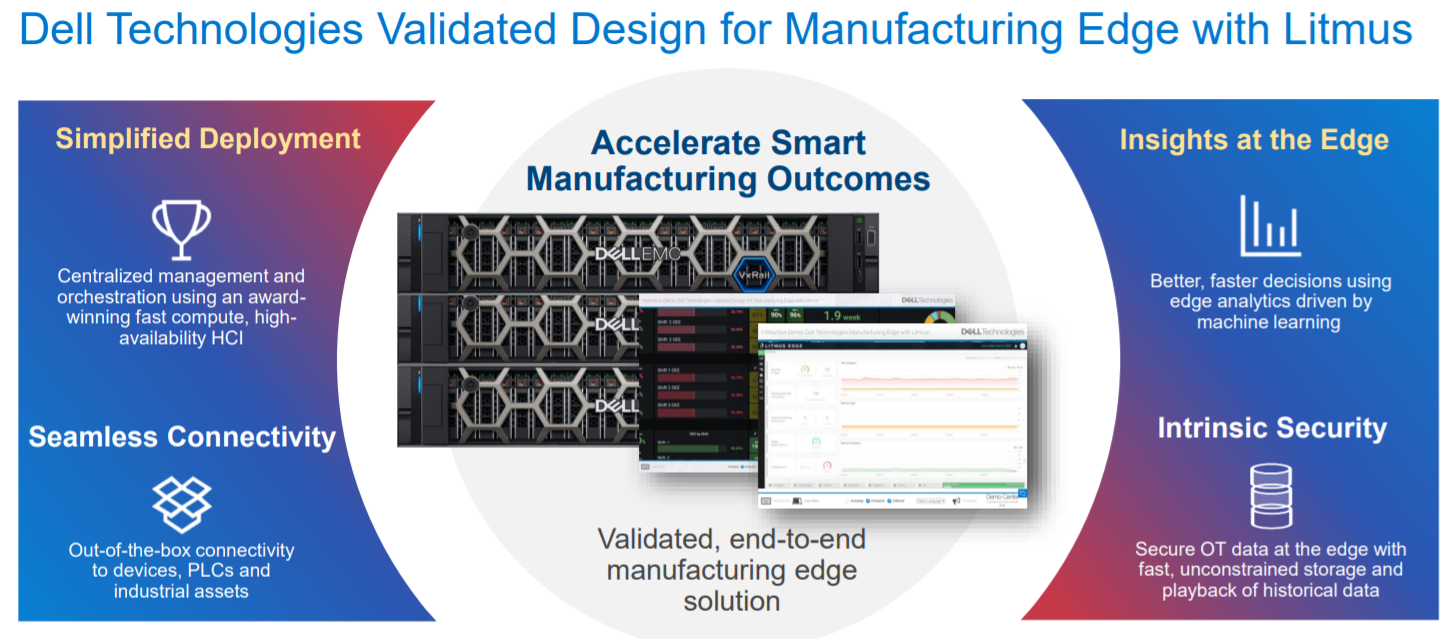

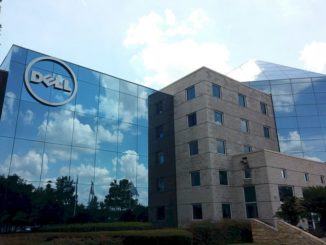


Be the first to comment